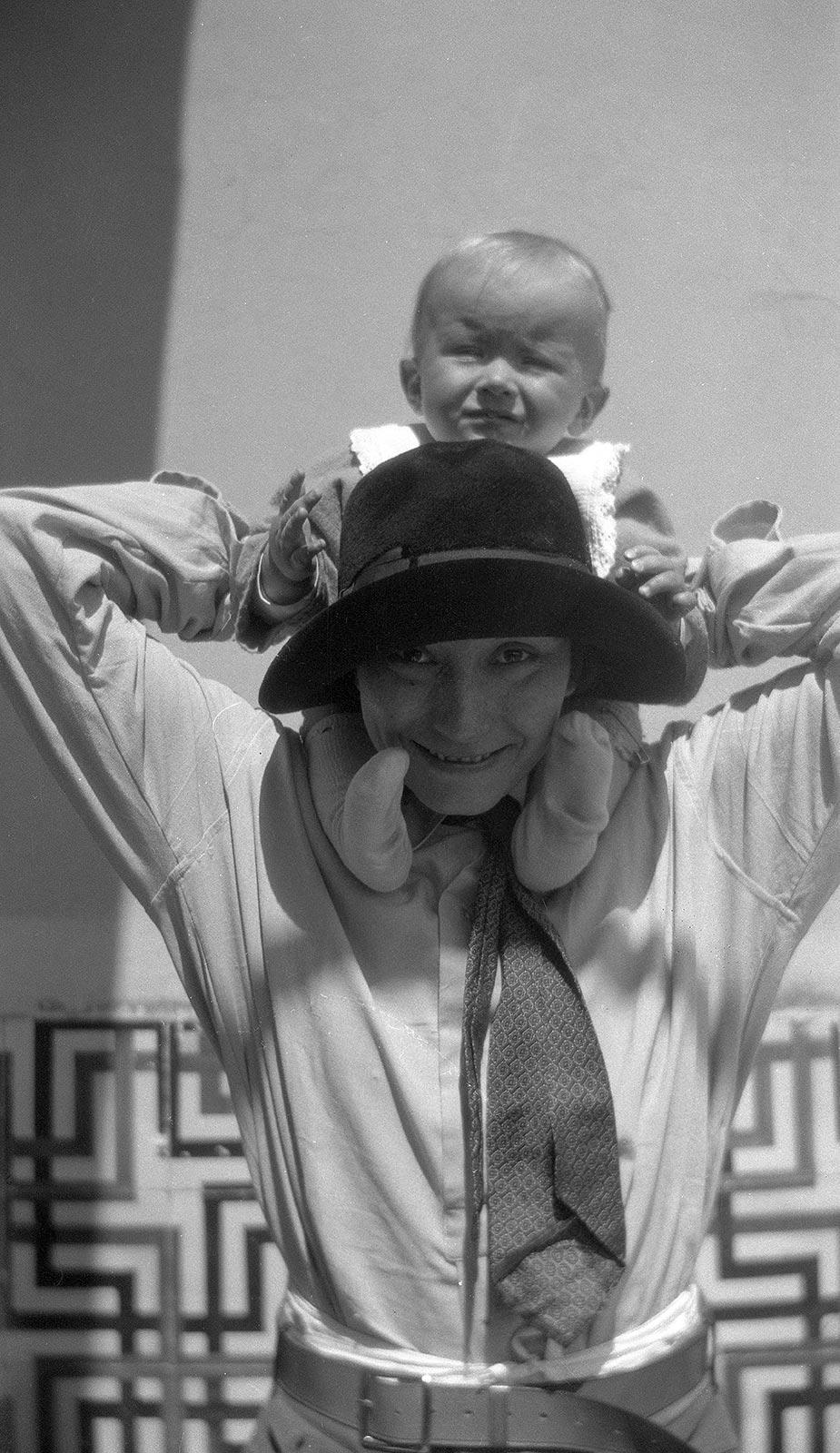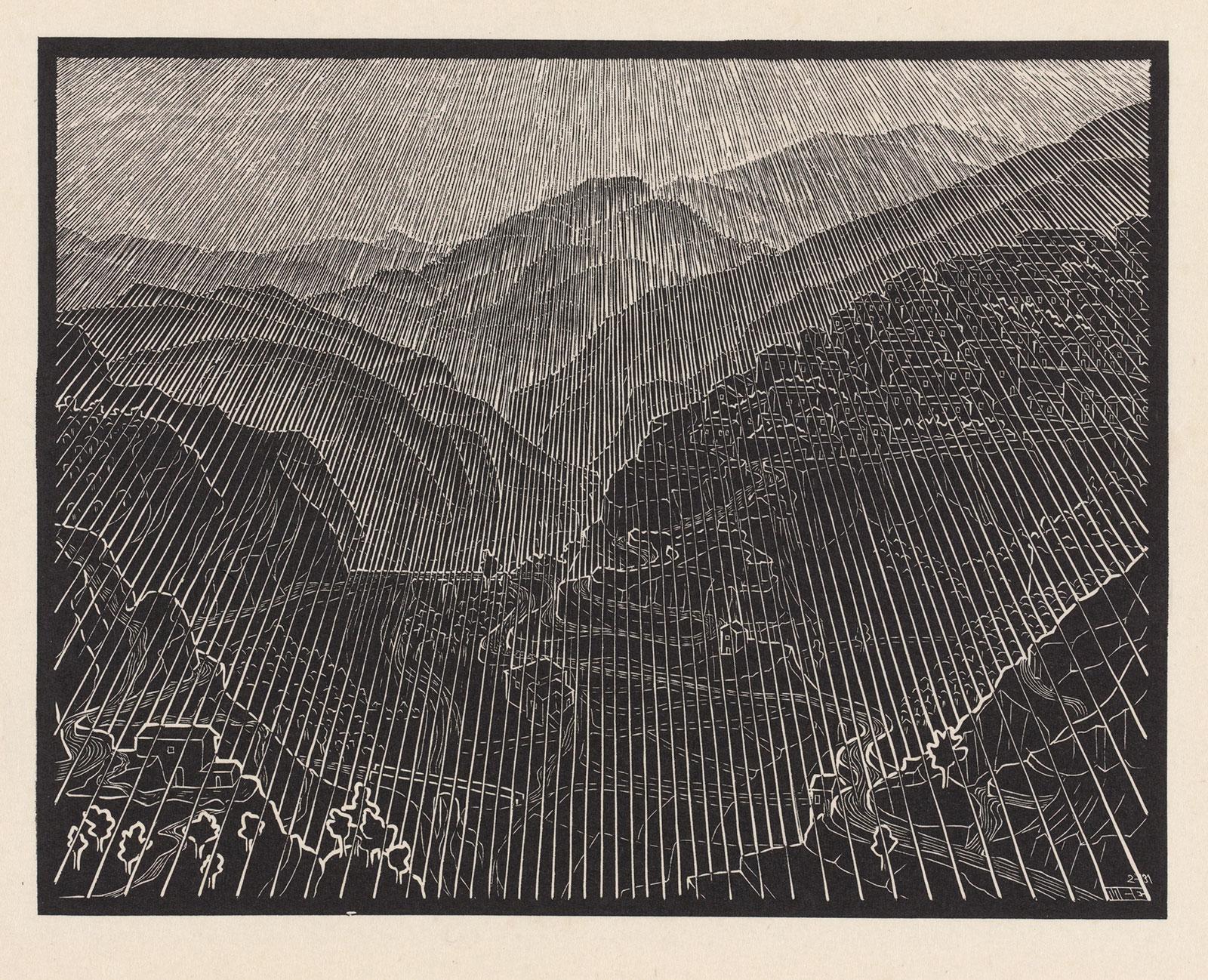

You have 10 more days to view some remarkable Escher prints at Escher in The Palace. On 11 June they will be returned to the archive to be replaced with new graphic treasures. We previously discussed the woodcut The Third Day of the Creation, from a series in which Escher depicted the Creation in a stark contrast of black and white.
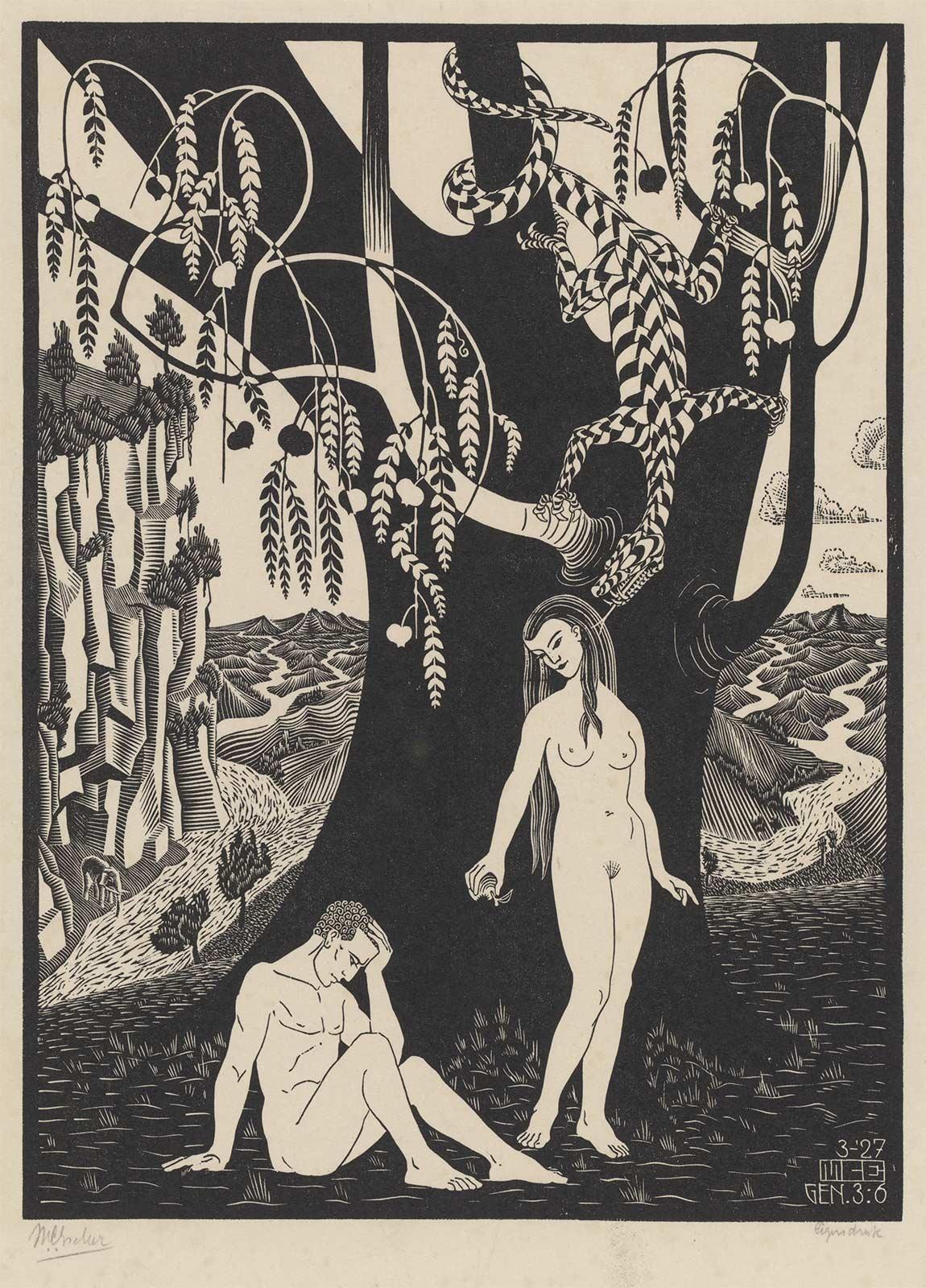


Today we focus on a woodcut that does not belong to this series, but which does have a biblical theme. The Fall of Man shows Adam and Eve in the Garden of Eden at the moment they have eaten from the tree of knowledge of good and evil, which God had forbidden. They were tempted by the devil in the form of a serpent, who first convinced Eve, before Adam too ate the forbidden fruit. Escher depicts the two just after Adam has eaten from the apple and is sitting on the ground in dismay, knowing they have made a grave mistake.
What is remarkable about this woodcut is that Escher does not present us with a snake, but rather some sort of dragon or large lizard. This decision sees Escher joining in with an interpretation of this biblical story that suggests the animal that tempts Adam and Eve had paws and claws before the Fall of Man took place. After this fall, the animal had to live out its days slithering on its belly, condemned to this fate by God. This curse implies that something changed in the way in which the snake moves, presumably in tandem with a change in physical form.
Other artists like Albrecht Dürer and Rembrandt van Rijn used this shape of a dragon. They show Adam and Eve just before the fact, whereas in Escher’s version the two have already eaten from the apple. Remarkable in both Rembrandt’s and Escher’s versions is the fact that the dragon looks ferocious, unlike the milder interpretations made by other artists. A second similarity with Rembrandt is harder to spot. Both works feature an elephant in the background. The animal symbolises piety and chastity but also stands for Christ, the only one who can lift up the fallen man.
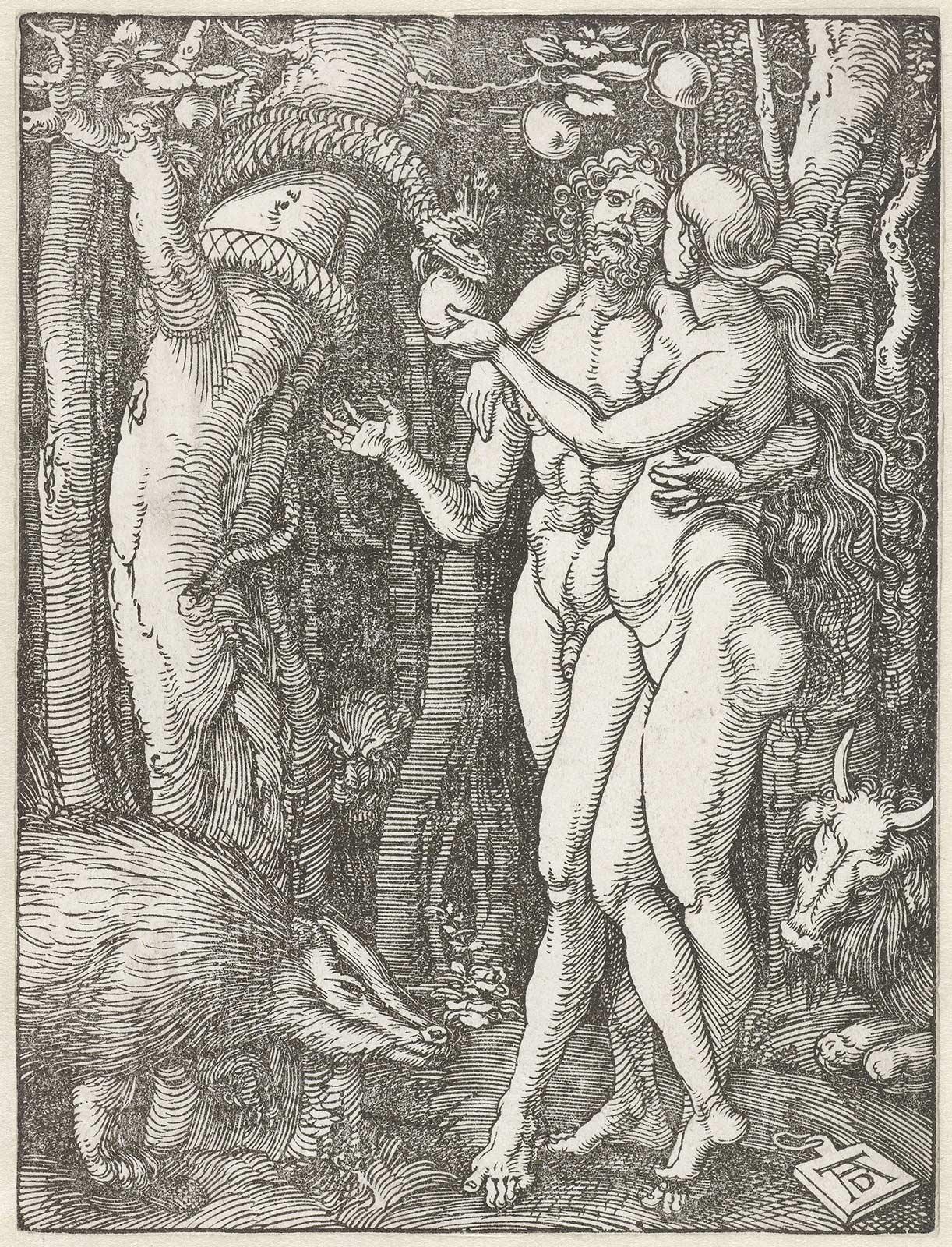
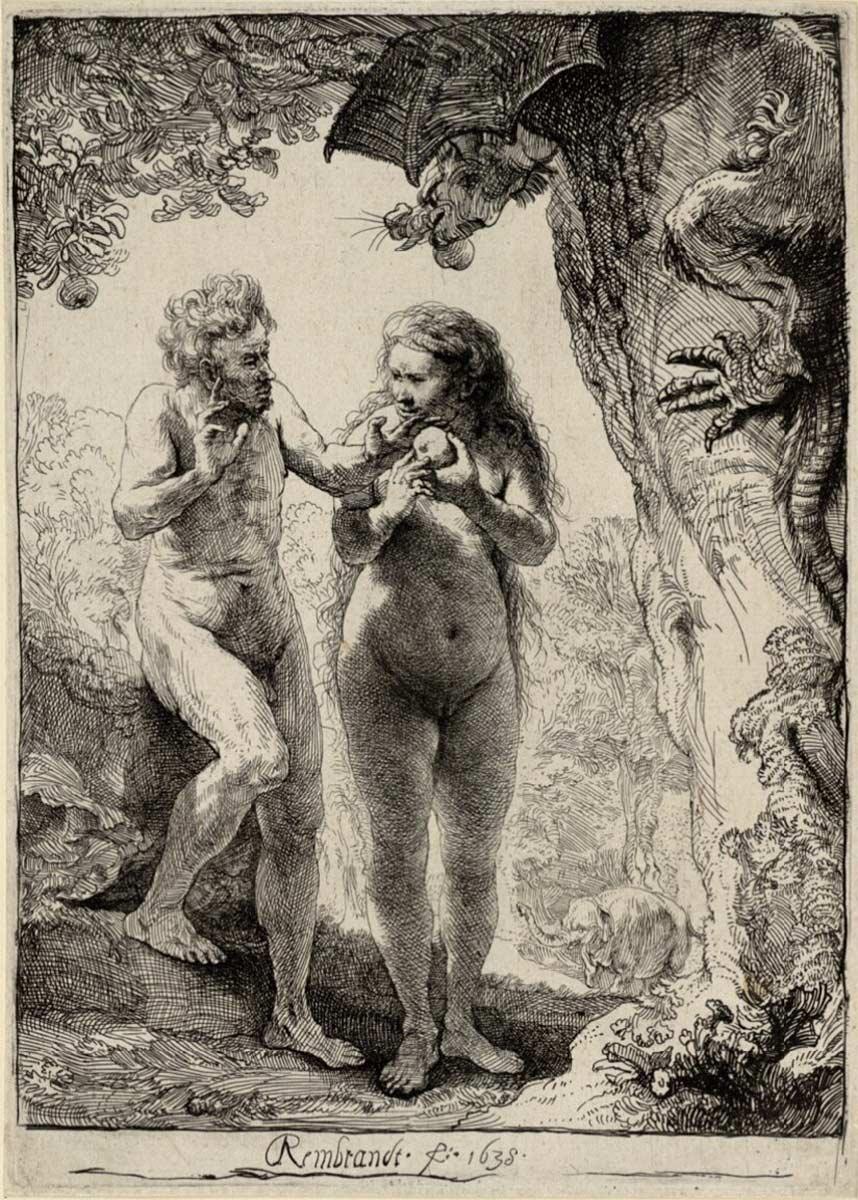
More Escher today

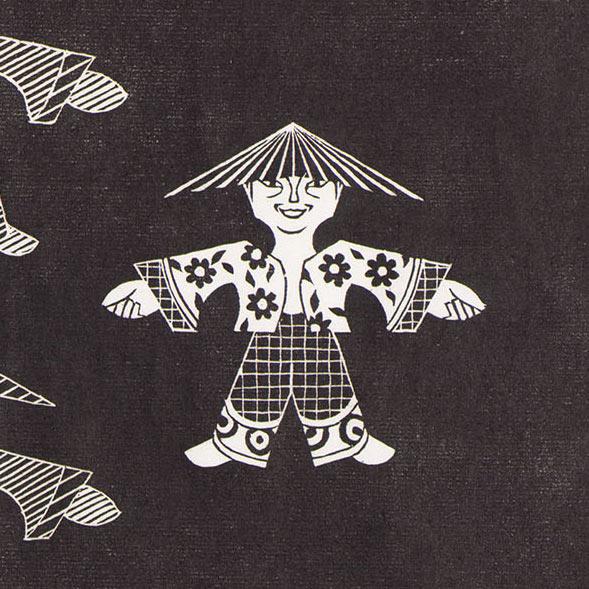
The way of the master
